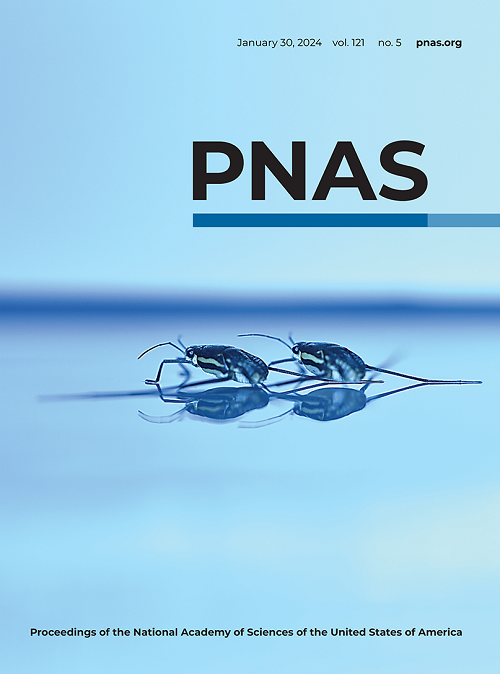古代DNA表明大西洋蓝鳍金枪鱼的历史人口数量下降和基因侵蚀
IF 9.4
1区 综合性期刊
Q1 MULTIDISCIPLINARY SCIENCES
Proceedings of the National Academy of Sciences of the United States of America
Pub Date : 2025-05-20
DOI:10.1073/pnas.2409302122
引用次数: 0
摘要
在过去的一个世纪里,过度捕捞使鱼类资源枯竭;尽管如此,它对大多数物种的基因组影响仍然知之甚少。描述这些后果的时空模式可以为过去的多样性和生产力提供基线估计,以帮助管理目标,帮助预测未来的动态,并促进识别限制鱼类种群恢复的进化因素。在这里,我们评估了人类对标志性的大西洋蓝鳍金枪鱼(Thunnus thynnus)进化的影响,蓝鳍金枪鱼是最长和最密集开发的海洋鱼类之一,具有巨大的文化和经济重要性。我们对5000年前的现代(n = 49)和古代(n = 41)标本进行了全基因组测序,发现了一些发现。首先,我们确定了种群混合的暂时稳定模式,因为在挪威和地中海东部捕获的蓝鳍金枪鱼与墨西哥湾蓝鳍金枪鱼的祖先程度比西部和中部地中海蓝鳍金枪鱼更高。这表明大西洋产卵区是地中海蓝鳍金枪鱼基因多样性的重要混合地。我们建立了有效种群规模模型,表明地中海蓝鳍金枪鱼在1900年开始经历种群数量的下降,其程度在过去的几千年里都没有观察到。与此相吻合的是,我们发现现代(2013年至2020年)地中海蓝鳍金枪鱼的杂合性和核苷酸多样性明显低于古代(1941年之前),这表明蓝鳍金枪鱼经历了遗传瓶颈。通过这项工作,我们展示了古代DNA如何为生态复杂性提供独特的视角,并有可能为鱼类的管理和保护提供信息。本文章由计算机程序翻译,如有差异,请以英文原文为准。
Ancient DNA suggests a historical demographic decline and genetic erosion in the Atlantic bluefin tuna
Overexploitation has depleted fish stocks during the past century; nonetheless, its genomic consequences remain poorly understood for most species. Characterizing the spatiotemporal patterns of these consequences may provide baseline estimates of past diversity and productivity to aid management targets, help predict future dynamics, and facilitate the identification of evolutionary factors limiting fish population recovery. Here, we evaluate human impacts on the evolution of the iconic Atlantic bluefin tuna ( Thunnus thynnus ), one of the longest and most intensely exploited marine fishes, with a tremendous cultural and economic importance. We sequenced whole genomes from modern (n = 49) and ancient (n = 41) specimens dating up to 5,000 y ago, uncovering several findings. First, we identify temporally stable patterns of population admixture, as bluefin tuna caught off Norway and in the eastern Mediterranean share a greater degree of ancestry with Gulf of Mexico bluefin tuna than western and central Mediterranean bluefin tuna. This suggests that Atlantic spawning areas are important mixing grounds for the genetic diversity of Mediterranean bluefin tuna. We model effective population size to show that Mediterranean bluefin tuna began to undergo a demographic decline by the year 1900 to an extent not observed across the previous millennia. Coinciding with this, we found that heterozygosity and nucleotide diversity were significantly lower in modern (2013 to 2020) than ancient (pre-1941) Mediterranean bluefin tuna, suggesting that bluefin tuna underwent a genetic bottleneck. With this work, we show how ancient DNA provides unique perspectives on ecological complexity with the potential to inform the management and conservation of fishes.
求助全文
通过发布文献求助,成功后即可免费获取论文全文。
去求助
来源期刊
CiteScore
19.00
自引率
0.90%
发文量
3575
审稿时长
2.5 months
期刊介绍:
The Proceedings of the National Academy of Sciences (PNAS), a peer-reviewed journal of the National Academy of Sciences (NAS), serves as an authoritative source for high-impact, original research across the biological, physical, and social sciences. With a global scope, the journal welcomes submissions from researchers worldwide, making it an inclusive platform for advancing scientific knowledge.

 求助内容:
求助内容: 应助结果提醒方式:
应助结果提醒方式:


